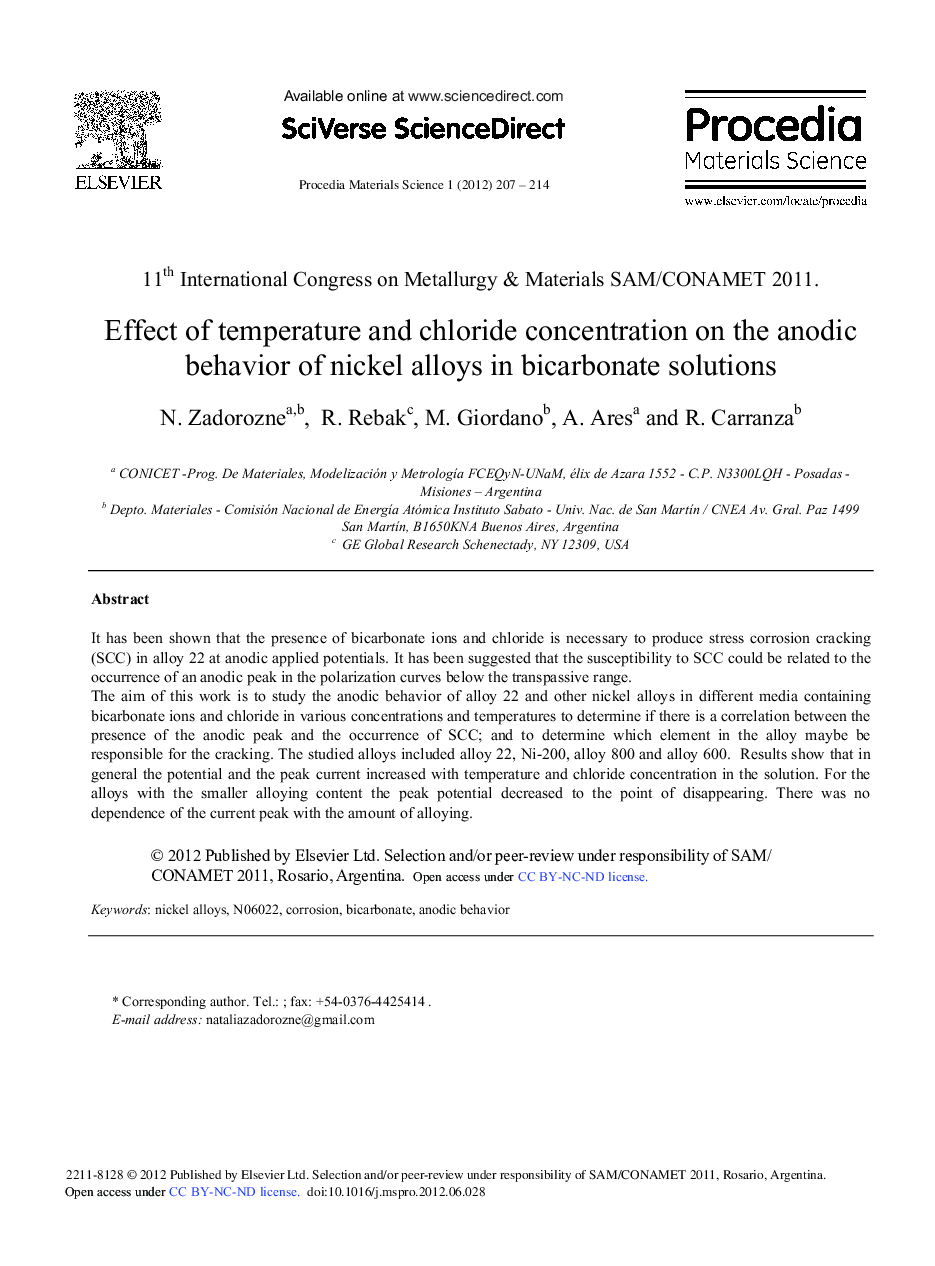| کد مقاله | کد نشریه | سال انتشار | مقاله انگلیسی | نسخه تمام متن |
|---|---|---|---|---|
| 1634875 | 1516784 | 2012 | 8 صفحه PDF | دانلود رایگان |

It has been shown that the presence of bicarbonate ions and chloride is necessary to produce stress corrosion cracking (SCC) in alloy 22 at anodic applied potentials. It has been suggested that the susceptibility to SCC could be related to the occurrence of an anodic peak in the polarization curves below the transpassive rangeThe aim of this work is to study the anodic behavior of alloy 22 and other nickel alloys in different media containing bicarbonate ions and chloride in various concentrations and temperatures to determine if there is a correlation between the presence of the anodic peak and the occurrence of SCC; and to determine which element in the alloy maybe be responsible for the cracking. The studied alloys included alloy 22, Ni-200, alloy 800 and alloy 600. Results show that in general the potential and the peak current increased with temperature and chloride concentration in the solution. For the alloys with the smaller alloying content the peak potential decreased to the point of disappearing. There was no dependence of the current peak with the amount of alloying
Journal: Procedia Materials Science - Volume 1, 2012, Pages 207-214